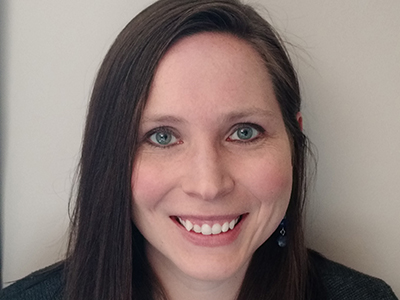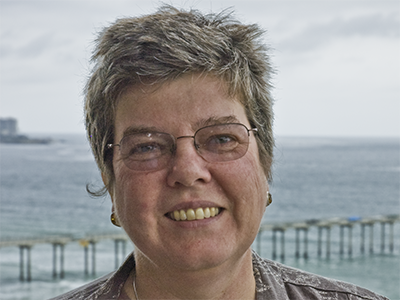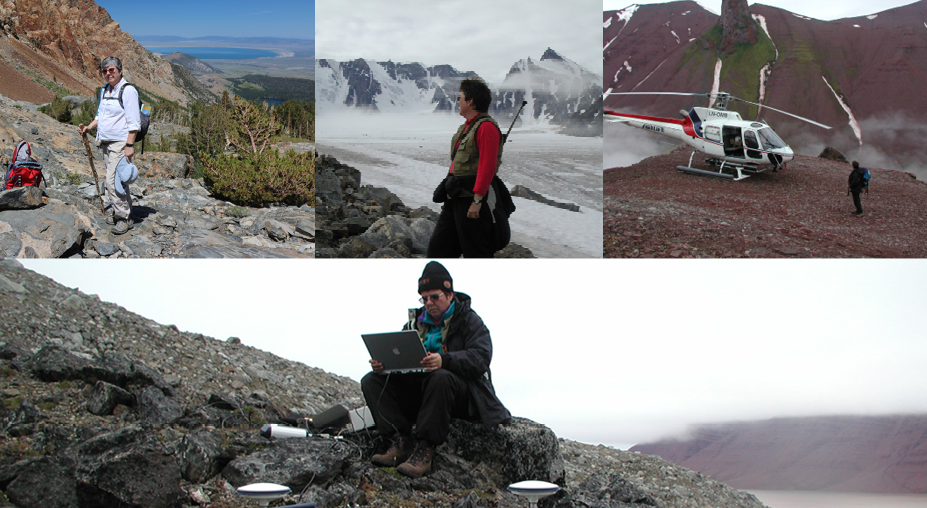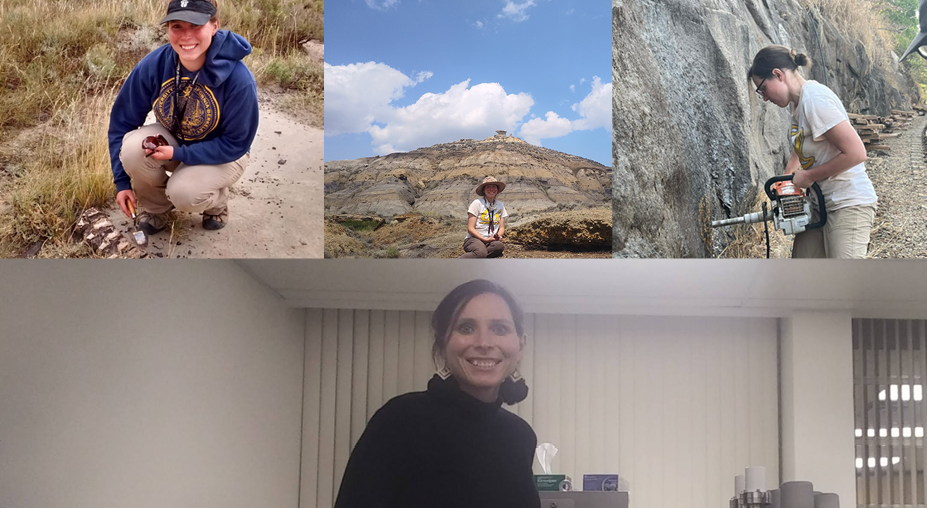Geomagnetism, Paleomagnetism and Electromagnetism Section

Citation
We recognize Prof. Courtney Sprain for “outstanding contributions to geochronology including radiometric and paleomagnetic methods to solve persistent problems in the Earth sciences.” Her research focuses on a better understanding of important aspects of Earth’s evolution, ranging from the origin and nature of deep interior processes to ones that have affected Earth’s surface and life on it. She represents the best of us in her highly integrative and creative research and her generous and collegial approach to science.
As a graduate student, Sprain knit together paleomagnetic and radiometric approaches to geochronology, working on the famous Hell Creek Formation in Montana. This formation has the last traces of dinosaurs and the first sniff of mammals spanning the Cretaceous/Paleogene boundary. Magnetostratigraphic constraints provide only the crude estimate that the extinction happened in a reverse polarity chron (C29r), which is over a million years long. Sprain analyzed many tephra layers intercalated with the fossiliferous sediments, providing the highest-resolution look to date at what happened during this fascinating period of time. The benefit of combining magnetostratigraphy and Ar-Ar dating was further illustrated in her work on the Deccan Traps in India. Sprain was able, through high-resolution dating, to demonstrate that most of the Deccan Traps really blasted off (literally) in response to the Chicxulub impact. She further argued that Late Cretaceous records of climate change coincided with the eruption of the early phases of the traps (before the boundary) and that the Deccan was not the source of Late Cretaceous climate change.
During her postdoctoral years, Sprain added more to her tool kit in a groundbreaking new analysis of a challenging subject in paleomagnetism/geomagnetism: numerical geodynamo simulations. This is a tricky business, because the domain in which the numerical models operate cannot (yet) achieve Earth-like conditions. Nonetheless, Sprain and coauthors found models that do produce Earth-like field behavior, allowing us to simulate long-term geomagnetic field behavior and gain a greater understanding of Earth’s core and its evolution. Moreover, Courtney expanded the opportunities for providing high-quality paleointensity records by demonstrating the potential of clinker deposits. This kind of investigation is critical to the future study of the behavior of Earth’s ancient field strength, as the current database is dominated by results from materials that are less than ideal.
In summary, Prof. Courtney J. Sprain is a superb candidate for the William Gilbert Award, and the community celebrates her recognition.
—Lisa Tauxe, Scripps Institution of Oceanography, La Jolla, Calif.; and John Geissman, University of Texas at Dallas
Response
I am extremely honored to receive the 2022 William Gilbert Award. Over the past 10+ years, the Geomagnetism, Paleomagnetism, and Electromagnetism (GPE) community has felt like a second family. I know I would not be where I am today without the community’s continued support, mentorship, and friendship.
I have so many people to thank, starting with all the members of the Institute for Rock Magnetism (IRM). I was extremely fortunate to get involved with IRM as an undergraduate student through a research position with Josh Feinberg (in collaboration with John Geissman). Josh was a wonderful adviser, and he’s continued to be a great mentor. Other IRM members also provided substantial support, including Julie Bowles, Bruce Moskowitz, Mike Jackson, Peter Solheid, Beck Strauss, Max Brown, Dario Bilardello, and Nick Swanson-Hysell, among others. Since my time as an undergraduate, IRM has welcomed me back on numerous occasions, and I am beyond grateful for their continued support and guidance.
I’d also like to thank my Ph.D. adviser, Paul Renne, who has been a great mentor and allowed me to continue my passion for paleomagnetism while teaching me the fundamentals of 40Ar/39Ar geochronology. In addition, I’d like to thank Nick Swanson-Hysell, who during my time at Berkeley welcomed me into his group where I was surrounded by others, like Nick, Sonia Tikoo-Schantz, and Sarah Slotznick, who shared my enthusiasm for paleomagnetism.
I also need to thank everyone from the Geomagnetism Laboratory at the University of Liverpool, including Andy Biggin, Greig Paterson, Richard Bono, Annique van der Boon, Yael Engbers, Daniele Thallner, Michael Grappone, Louise Hawkins, Simon Lloyd, Ben Handford, Domenico Meduri, Elliot Hurst, and honorary member Chris Davies, among others. Andy, thank you so much for hiring me as your postdoc—I loved my time in Liverpool.
At the University of Florida (UF), I’m very fortunate to have been hired into a legacy of excellence in paleomagnetism following in the footsteps of Neil Opdyke, Jim Channell, and Joe Meert. I’m so grateful to be here and to continue the tradition of UF paleomagnetic research with Joe Meert and Rob Hatfield.
Finally, I need to thank my nominators and the committee for this award. Lisa, you have been a mentor to so many of us and an inspiration to many early-career paleomagnetists. John, I very literally owe my beginnings in paleomagnetism to you. Your kindness and support over the years have been greatly appreciated.
—Courtney J. Sprain, University of Florida, Gainesville
Field Photos

Field Photos

